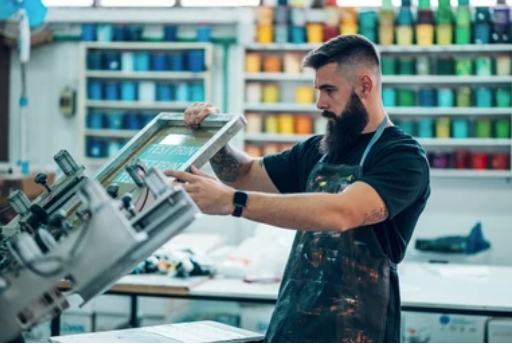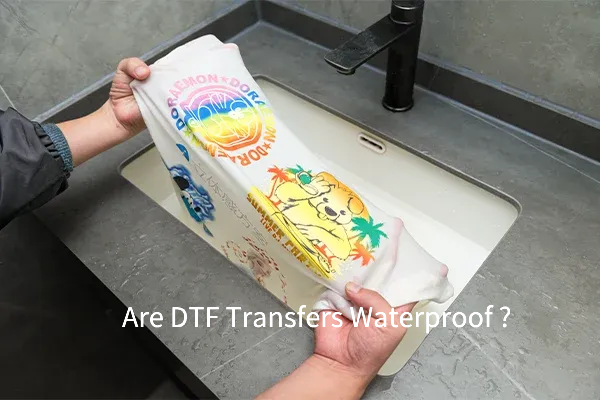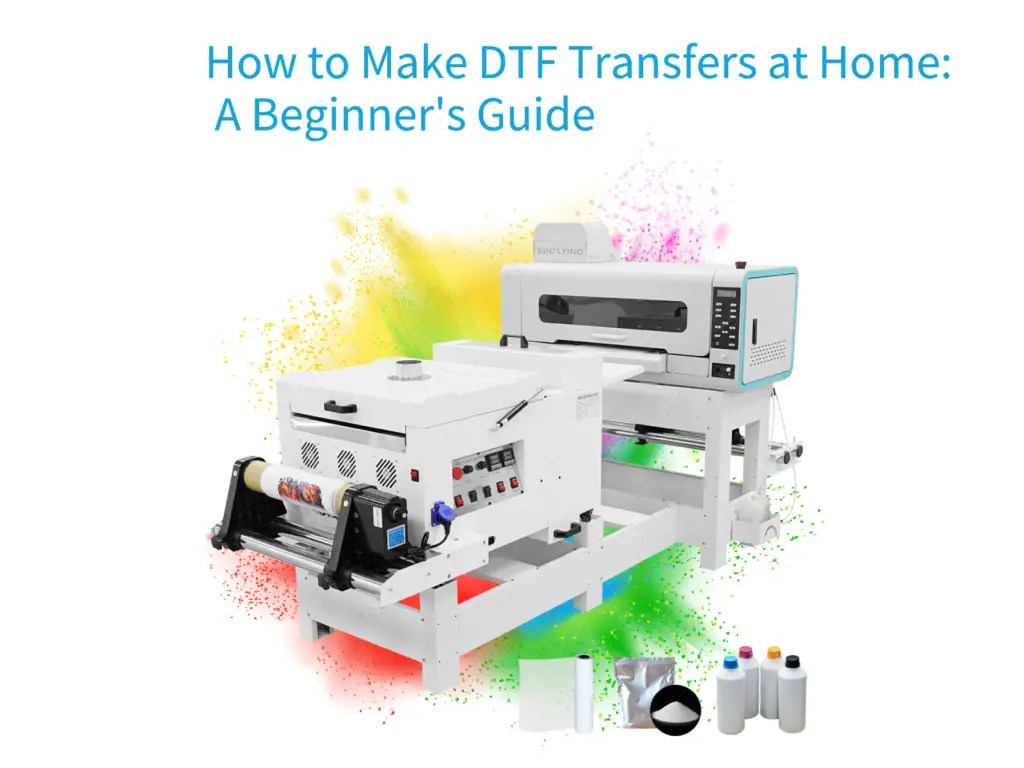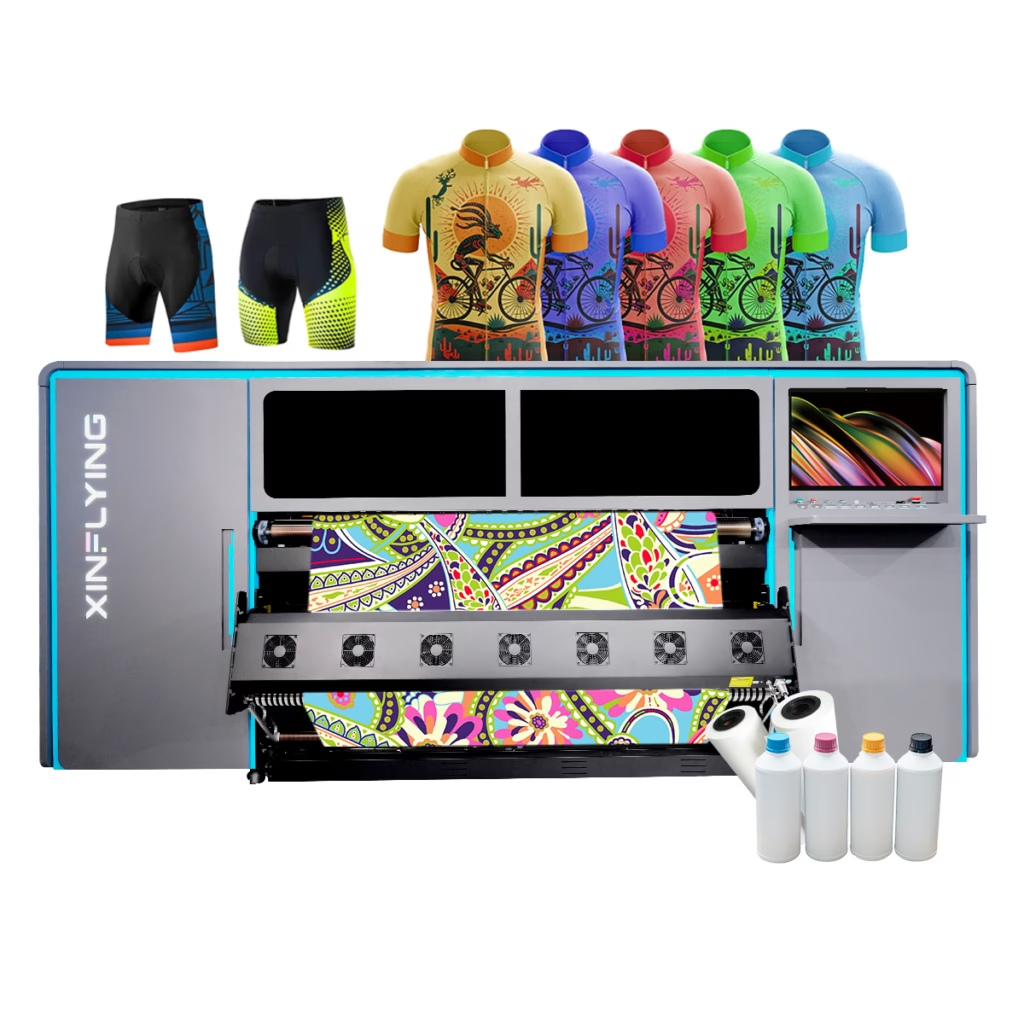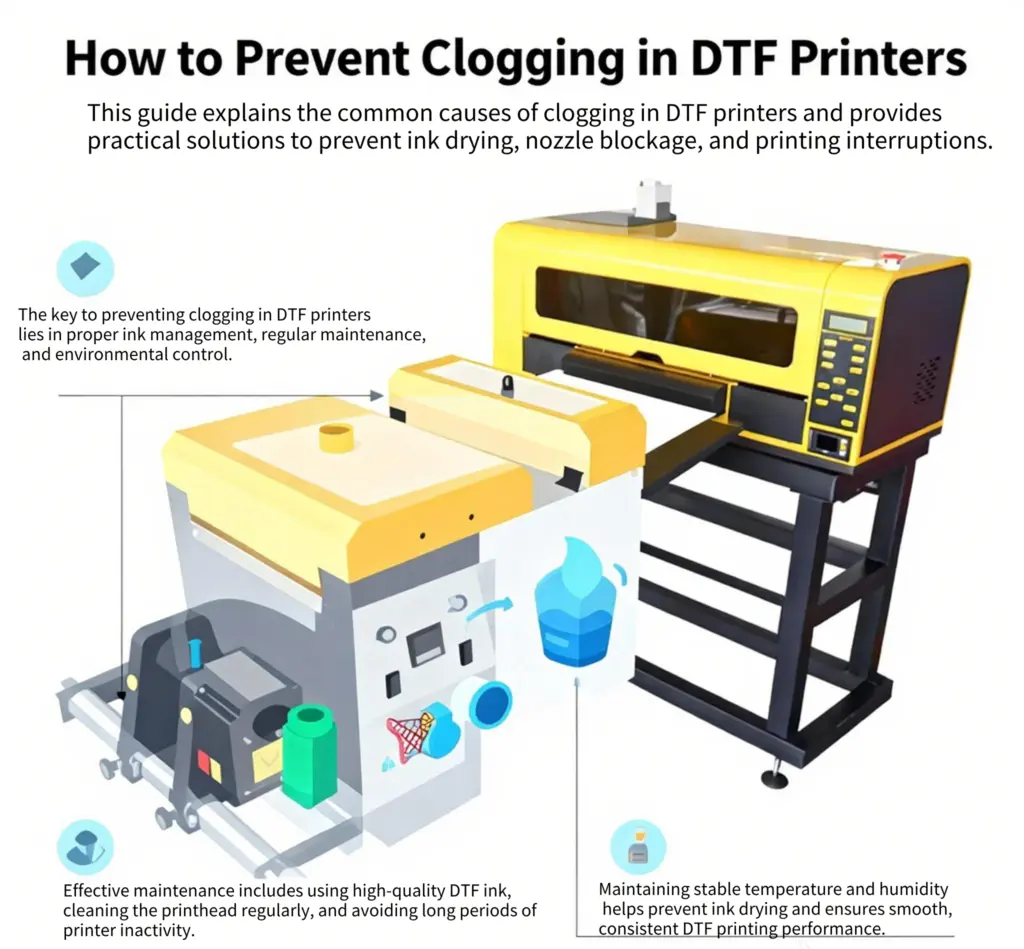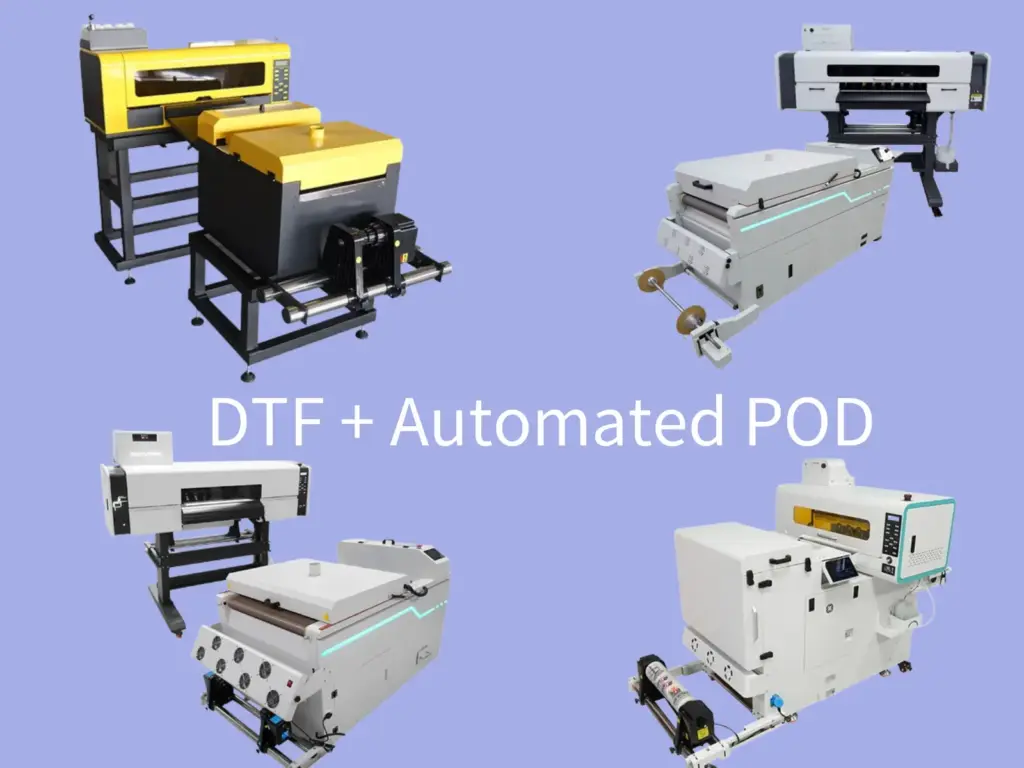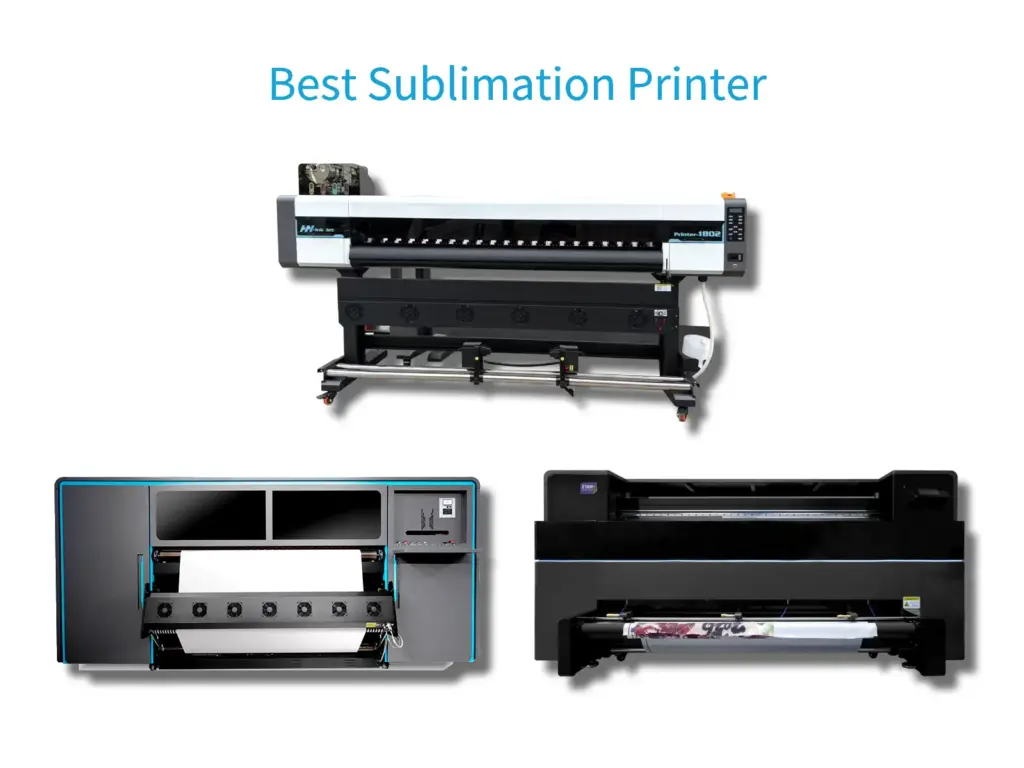Materalar bosib chiqarish turli sohalarda muhim jihatlar sifatida paydo bo'ldi, nafaqat jonli, balki bardoshli yuqori sifatli mato bosmalariga talab ortib borayotganligini qondirish. Ushbu blog postida, Biz ikkita taniqli matolarni bosma usullarini taqqoslashni maqsad qilamiz – SUBLIUATSIYA BOSHQARMASI VA ISHLARNI O'RNATISH. Ushbu usullarning diqqatga sazovor joylariga o'tish orqali, Biz o'quvchilarga ideal matolarni printer ishlab chiqaruvchisini tanlashda yordam beradigan qimmatli tafovutlarni taqdim etishni rejalashtirmoqdamiz.
Sublimatsiya bosib chiqarish nima?
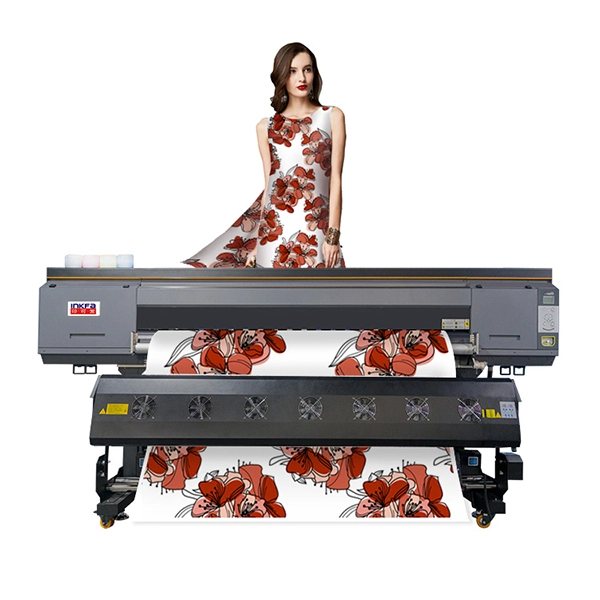
Sublimatsiya va issiqlik o'tkazmasi uchun eng yaxshi printerni topishdan oldin, Ularning orasidagi farqlarni ko'rib chiqaylik, qaysi biri sizga mos ekanligini aniqlash. SUBLIATATSIYA BIRINChI FOYDALANISh UChUN mashhur usul, jonli, va turli xil materiallarda uzoq muddatli bosma nashrlar. U subtimulyatsiya jarayonini ishlatadi, bu moddaning qattiq fazasi orqali o'tmasdan, moddaning qattiqgacha gazgacha o'tishdir. Ushbu noyob bosib chiqarish usuli an'anaviy issiqlik uzatish usullari bo'yicha bir nechta afzalliklarni taklif etadi, Ko'pchilik sanoat uchun afzal ko'rgan tanlov qilish, shu jumladan sport kiyimi va moslashtirilgan tovarlar.
SuBlimulyatsiyani qanday bosib chiqarish ishlaydi
Bu juda katta qadamlarni o'z ichiga oladi, Bardoshli bosma nashrlar. Birinchidan, Istalgan rasm yoki dizayn subtimatsiya siyohidan foydalanib ixtisoslashtirilgan sulmalatsion qog'ozda bosilgan. Kambag'al inkjet bosmadan farqli o'laroq, Sublimatsiya siyohi qizdirilganda qattiq gazga aylantirish uchun aniq shakllangan, Qog'ozda biron bir qoldiq qoldirmasdan.
Keyingisi, Chop etilgan sublimulyatsiya qog'ozi kerakli materialning ustiga joylashtirilgan, masalan, poliester mato yoki qoplangan kulolchilik. Keyin butun sozlash issiqlik press mashinasi yordamida yuqori issiqlik va bosim o'tkaziladi. Issiqlik va bosimning bu kombinatsiyasi fazaning o'zgarishidan o'tish va gazga aylanishi uchun siyohni siyohni keltirib chiqaradi.
Siyoh gazsimon holatga aylanib borayotganda, Bu materialning yuzasiga yopishadi, uning tolalari yoki qoplamalari bilan bog'lanish. Bu doimiy ravishda amalga oshiriladi, so'nishlarga chidamli uzoq muddatli bosma, yorilish, yoki peeling. Jarayon juda samarali, Gaz zarralari hatto eng mayda burilishlarni ham kiritishi mumkin, to'liq rang va batafsil chop etish.
SuBliatsion bosib chiqarishning afzalliklari
SuBliatsion bosib chiqarishning asosiy afzalliklaridan biri bu U ishlab chiqaradigan bosmalarning variansi. Chunki sublimatsiya siyoh shunchaki sirtda o'tirish o'rniga materialning bir qismi bo'ladi, ranglar yanada jonli va hayotga ega. Qo'shimcha, Chop etilganlar ularni saqlab qolishadi Yorqinlik va aniqlik bir nechta yuvishdan keyin ham, ularni sport kiyimlari uchun ideal qilish, tez-tez ovqatlanishni tez-tez davolaydi.
Bundan tashqari, SUBLIATSIYA BOSHQARMASI QO'ShIMChA aql bovar qilmaydigan chidamlilik. Chop etilganlar xiralashgan, ularni qattiq muhit yoki UB nurlariga duchor bo'lgan mahsulotlar uchun mos tayyorlash, masalan, tashqi yoki plyaj sochiq kabi. Chop etish ham juda moslashuvchan va qulay, hatto tez-tez harakatlanadigan kiyimlarda yoki cho'zilgan kiyim-kechaklarda bo'lganligi sababli, ularga yaxshiliklarni saqlashga imkon berish.
Sublimatatsiyani bosib chiqarish
Suchtlar uchun printerlarni submallashtirish printerlaridan foydalanish, Sublimatatsion bosib chiqarish keng tarmoq sanoatiga tegishli. Sport kiyimi, shu jumladan jasurs, forma, va faol kiyim, SuBlieatsiyani taklif qiladigan jonli va bardoshli bosma nashrlardan juda katta foyda. Shaxsiylashtirilgan tovarlar, krujkalar kabi, telefon qutilari, va to'qimachilik, Sublimatsiya bosib chiqarish bilan yaxshilanishi mumkin, korxonalarga o'z mijozlari uchun noyob va shaxsiy mahsulotlar yaratishga ruxsat berish.
Issiqlikni uzatish nima?

Issiqlikni uzatish uchun issiqlik bosib chiqarish uchun mashhur muqobil usul sifatida paydo bo'ldi, Ko'p qirrali va qulaylikni taklif qilish. Ushbu jarayon pul o'tkazmalarini issiqlik va bosimdan foydalangan holda matoga kirishni o'z ichiga oladi, natijada jonli va bardoshli bosma nashrlarga. Ushbu bo'limda, Issiqlikni uzatishning bosqinchilariga sho'ng'iymiz, uning o'zgarishi, foyda, cheklash, va u odatdagidan foydalanadigan sohalar.
Issiqlikni uzatish qanday ishlashi mumkin
A bilan boshlanadi Qog'oz qog'oz bu kerakli dizayn yoki naqshni o'z ichiga oladi. Ushbu qog'oz yuqori haroratga bardosh beradigan ixtisoslashgan siyoh yordamida bosilgan. Dizayn bosilgandan so'ng, U yuzga pastga qarab, issiqlik va bosim ostida, siyohni matoga o'tkazishga olib keladi. Ushbu usul aniq va batafsil bosma nashrlarga imkon beradi, uni murakkab dizayn va naqshlar uchun moslashtirish.
Issiqlikni uzatish turli shakllarda bo'ladi, Har bir noyob xususiyatlar va ilovalar. Bitta mashhur tafovut - bu isitish issiqlik uzatilishi, bu o'simlik zarralarini mato tolalari bilan bog'laydigan gazga aylantirish uchun issiqlikdan foydalanishni o'z ichiga oladi. Ushbu usul uzoq muddatli bosmalarni jonli ranglar va ajoyib chidamlilik bilan ta'minlaydi. Yana bir tafovut - plastisol issiqlik o'tkazuvchan, bu matoga davolangan issiqlikdagi plastik siyoh turidan foydalanadi, Silliq va noaniq dizaynni yaratish.
Issiqlikni uzatishning afzalliklari
Bu foydalanish qulayligi va minimal texnikani talab qiladi va talabni bajarishi mumkin, uni kichik ishlab chiqarish yoki shaxsiylashtirilgan bosmalarga moslashtirish. Qo'shimcha, Issiqlik uzatish bosib chiqarish imkonini beradi Samarali rangni ko'paytirish, aniq va izchil natijalarni ta'minlash. Biroq, shuni ta'kidlash kerakki, issiqlik uzatish chilani vaqt o'tishi bilan rangdan voz kechishi mumkin, ayniqsa, tez-tez yuvish va ortiqcha issiqlik.
Issiqlik uzatish uchun bosib chiqarish
Issiqlikni uzatishning tahririyligi uni turli sohalarda ommaviy tanlovga aylantiradi. Moda sohasida, Odatda kiyimlarni sozlash uchun ishlatiladi, Noyob dizayn yoki logotiplarni qo'shish. Issiqlik transporti Bosma, shuningdek, uy dekorti sanoatida dasturlarni topadi, Shaxsiylashtirilgan to'qimachilikni yaratishga imkon berish, kabi yostiqlar, pardalar, va choyshablar. Bundan tashqari, Ushbu usul keng ko'lamli forma va tadbirlar savdosi uchun sport kiyim sanoatida keng qo'llaniladi.
SUBLIATSIYA BOSHQARMASI VA. Qisqacha issiqlikni uzatish
Sublimatatsiyani bosib chiqarish va issiqlik o'tkazmasini tanlashda, Moddiy turdagi omillarni hisobga olish juda muhimdir, dizayn murakkabligi, va kerakli makr sifati, Har bir usul noyob afzallik va kamchiliklarni taklif qiladi.
| Sublimatsiya bosib chiqarish | Issiqlik uzatish | |
| Jarayon | Siyohni qog'ozdan gaz chiqarib, gazsimon shaklda ishlatish uchun ishlatadi, olib tashlanmaydigan infuzionga olib keladi. | Dizaynni qog'ozdan matoga o'tkazish uchun issiqlikdan foydalanadi. |
| Chop etish sifati | Vaqt o'tishi bilan so'ramaydigan yoki buzilmaydi. | Nisbatan yaxshi chop etish sifatiga olib kelishi mumkin, ammo vaqt o'tishi bilan buzilishi yoki yorilishi mumkin, va rasm matosda og'ir his qilishi mumkin. |
| Chidamlilik | Baland, Bo'yoq matoni ichiga kirganligi sababli. | Bardoshli bo'lmasligi mumkin, rasmga kirishga emas, balki materialning tepasida tasvirlanganidek. |
| Qulaylik | Terida juda qulay, Chop etish matoning bir qismi ekan. | Chop etish biroz og'irroq va kamroq qulay bo'lishi mumkin. |
| Ko'p qirralilik | Bir qator bir qator materiallarda, shu jumladan poliester va boshqa sintetik materiallarda ishlatilishi mumkin. | Paxtada chop etish uchun juda mos keladi, ipak yoki neylon. |
| Rang oralig'i | Keng ranglar va murakkab dizaynlarning keng doirasiga erishishi mumkin. | Rang diapazoni ishlatilgan jarayon va ishlatiladigan materiallarga qarab biroz cheklanishi mumkin. |
| Narxi | Kerakli uskunalar va substratlar tufayli yuqori xarajatlar, Ammo davomiy narxlar. | Yuqoriga tushadigan xarajatlar, Ammo pul o'tkazmalari va siyohlari uchun zarur bo'lgan yuqori xarajatlar. |
| Ilova | Poliester yoki boshqa sintetik matolarda chop etishda ishlatiladi. Rang-barang va murakkab dizaynlar uchun ideal. | Ko'plab paxta va boshqa tabiiy tolali matolarni bosib chiqarish uchun ishlatiladi. Cheklangan ranglar bo'lgan oddiy dizaynlar uchun eng yaxshisi. |
Mato printerini tanlashda e'tiborga olish omillari
Chop etish sifati
Asosiy omil - bu printer printer ishlab chiqaruvchisi tomonidan taqdim etilgan bosma sifat. A ni qidiring Mato printerini ishlab chiqaruvchisi bu yuqori martabali bosib chiqarishni taklif qiladi, jonli ranglar, va o'tkir tasvirlar. Nazariy namunalar va bosmalarning ravshanligini baholash uchun namunalarni chop etishni talab qiling.
Bosib chiqarish texnologiyasi
Ikki umumiy mato printerining variantlari sublimatsiya printeri va issiqlikni o'tkazish. Har bir usulning ijobiy va salbiy tomonlarini tushuning va o'zingizning aniq talablaringiz bilan qaysi birini yaxshiroq hal qiling. Ba'zi ishlab chiqaruvchilar bitta usulga ixtisoslashgan bo'lishi mumkin, Shunday qilib, shunga ko'ra tanlang.
Chidamlilik
Chop etishning mustahkamligini ko'rib chiqing, Ayniqsa, mato tez-tez yuvilishi yoki tashqi elementlariga duchor bo'lsa. Ishonchli mato modda printer ishlab chiqaruvchisi yuqori sifatli siyoh va bir nechta yuvinish va rang-baranglikni saqlab qolishadi.
Ko'p qirralilik
Mato printer ishlab chiqaruvchisi tomonidan taklif etilgan ko'p qirralikni baholang. Printer turli xil mato turlarini boshqarishi mumkinmi?? U keng o'lchamdagi o'lcham va shakllarda chop etilishi mumkinmi?? Mijoz talablarini ijobiylashingizga imkon beradigan echimni taqdim etadigan echimni taqdim etadigan ishlab chiqaruvchini tanlang.
Foydalanish qulayligi
Mato printerini ishlatish silliq va muammoli bo'lishi kerak. Foydalanuvchilarga qulay dasturiy ta'minot va aniq ko'rsatmalarni ta'minlaydigan ishlab chiqaruvchini qidiring. Qo'shimcha, Texnik qo'llab-quvvatlash va har qanday muammolar yuzaga kelishda qanday yordam olishingiz mumkinligi haqida so'rang.
Tezlik va ishlab chiqarish quvvati
Mato printerining ishlab chiqarish tezligi va imkoniyatlarini ko'rib chiqing. Agar sizda yuqori balandlikdagi bosib chiqarish talablari bo'lsa, Ishlab chiqaruvchi sizning talabingizga mos kelmasdan sizning talabingizga javob berishini ta'minlash. Shuningdek, ularning burilish vaqtini buyurtmalar uchun baholang, Bu sizning biznesingizning samaradorligiga ta'sir qilishi mumkin.
Investitsiyalarga narx va qaytarish
Mato printerining iloji borligini aniqlang va uning uzoq muddatli qiymatini baholang. Narxlarni turli ishlab chiqaruvchilar orasida taqqoslang, shuningdek, texnik xizmat ko'rsatish kabi omillarni hisobga olgan holda, materiallar, va operatsion xarajatlar. Agar predmet printeri uzoq muddatda yuqori ko'rsatkich va rentabellikni taklif qilsa, yuqoridan yuqori investitsiya asosli bo'lishi mumkin.
Xulosa
Blog posti SuBlimulyatsion bosib chiqarish va issiqlik transferini bosib chiqarish o'rtasidagi asosiy farqlarga yoritildi, Har bir usulning kuchli va cheklovlarini tushunish muhimligini ta'kidlang. Ularning ehtiyojlari va imtiyozlarini aniqlash orqali, O'quvchilar ideal matoli printer ishlab chiqaruvchisi ni tanlashlari mumkin. Oxir oqibat, Maqsad, matbaa texnikalarini o'qitish uchun jonli va bardoshli va bardoshli printlarni boshdan kechirishga intilayotganlarga yo'l-yo'riq va yordam berish..

